- Преподавателю
- Иностранные языки
- Chemical Composition of Plants and Air Pollution
Chemical Composition of Plants and Air Pollution
| Раздел | Иностранные языки |
| Класс | - |
| Тип | Другие методич. материалы |
| Автор | Савченко А.В. |
| Дата | 17.07.2015 |
| Формат | docx |
| Изображения | Есть |
Муниципальное казенное общеобразовательное учреждение
лицей №11 города Россоши Россошанского муниципального района Воронежской области
XIII региональная научно-практическая конференция по математике, физике и химии «Киселевские чтения»
Секция: английский язык
Chemical Composition of Plants and Air Pollution
Выполнил: учащийся 11 «Б»
Шемшура Егор Константинович
Руководители:
Баранникова Марина Вячеславовна,
учитель химии I КК;
Вишневская Наталья Николаевна,
учитель биологии ВКК;
Савченко Алла Владимировна,
учитель английского языка ВКК,
Сертификат TKT.
Россошь
2015
Table of Contents
Introduction………………………………………………………………..…………..3
Chapter I Air Pollution, Problems and Control Measures
-
Introduction and definition of environmental pollution......................................6
-
The sources of air pollutants. Classification of pollutants……………………..7
-
Monitoring of air pollutants and their impact on the chemical composition of plants……………………..…….…….…………………………………………..10
Chapter II Results of the Research Work and Their Discussion
2.1. Methodology of the investigation into the chemical composition of plants………………………………………………………………....….…………...12
2.2. Results of the questionnaire for the general public on the problem of air pollution used for the experimental purpose of the project…………………………………………….……………….……….…………14
Conclusions and recommendations…………….……….……………………..……..18
References…………………………………………….………………….…………..21
Appendices………………………………………………….…………..…………....22
Introduction
How long can a human being go without food? And without water? Then another question arises: How long can a human being go without breathing? This obvious case demonstrates the importance of respiratory system in Man's life.
Man can't live without breathing that is why it is very important for a human being to breathe clear/pure air.
Industrial wastes and exhaust fumes pollute the atmosphere of cities and towns. As a result, air pollution affects people's health. What is more, the number of respiratory diseases is constantly increasing.
Numerous scientific studies have linked air pollution to a variety of health problems. In fact, the respiratory system has a number of protective mechanisms, protecting it from harmful air pollutants. However, constant long-term affect of tobacco smoke side products and polluted air can cause overloading and repletion of human protective systems, which can result in the following health problems: allergic asthma, cancer and lung emphysema, chronic bronchitis. Furthermore, air pollution also affects the nervous system, including the brain, such as IQ loss and impacts on learning, memory and behavior. Some sensitive individuals appear to be at greater risk for air pollution-related health effects, for example, those with pre-existing heart and lung diseases, diabetics, older adults, and children.
Each cell has processes during which there is energy release, used for different types of human activities. Contractions of muscular fiber, nervous impulses carried out by neurons, secretion of secreta by glandular cells, processes of cell division are some of those vital cell functions which happen due to the energy released during the processes which are called tissue breathing. While cell breathing, oxygen is absorbed. While oxidizing, cell organic substances turn into compounds, molecules, which have much simpler structure. Thus, carbohydrates, being the main source of energy for cells, produce the ultimate products - carbon dioxide and water.
What is more, while breathing cells absorb oxygen and excrete carbon dioxide. These are external displays of complicated processes, happening in cells during the process of breathing. How is constant deposition of oxygen to cells provided and how is carbon dioxide, which oppresses their activity, withdrawn?
It takes place during the process of external breathing.
Oxygen from the environment is deposited to the lungs. It is a well-known fact that it is in the lungs where venous blood turns into arterial. The arterial blood, flowing through capillary vessels of the big circulation of blood, delivers oxygen through fiber liquid to the cells, which are washed by it, and carbon dioxide, excreted by cells, is deposited into the blood. In addition, the process of blood giving the carbon dioxide back to the atmospheric air also takes place in the lungs. It goes without saying that if oxygen delivery to the cells is stopped even for a while, it causes their death. That's why constant deposit of this gas from the environment is the essential/vital condition of human life.
We have chosen this theme of our research intentionally since the problem of air pollution and its harmful impact on people's health and the environment is one of the most important ones nowadays and still acute.
The purpose of our investigation is to find proofs of air pollution on the territory of our town and work out some recommendations on how to decrease its harmful impact on human health and the environment.
We have determined the following objectives of our research:
-
to examine the air in our town by carrying out some research work on chemical composition of plants;
-
to study the literature on this subject that is available on the Internet and in the libraries and summarize the valuable information;
-
to determine the importance of the quality of the air to a teenage body;
-
to develop skills of research work and their application to the solution of actual practical tasks;
-
to conduct a survey and to discuss the results of our research paper at the school conference;
The object of the investigation is the sources of air pollution in our town.
The subject of the investigation is the harmful impact of air pollution on chemical composition of plants.
The research paper consists of introduction, two chapters, conclusions and recommendations, list of references and appendices.
Chapter I. Air Pollution, Problems and Control Measures
1.1 Introduction and definition of environmental pollution
We know that, living organism cannot live by itself. Organisms interact among themselves. Hence, all organisms, such as plants, animals and human beings, as well as physical surroundings with whom we interact, form part of our environment. All these constituents of the environment are dependent upon each other. Thus, they maintain a balance in nature. As we are the only organisms which try to modify the environment to fulfill our needs, it is our responsibility to take necessary steps to control the environment mental imbalances.
The fact is that the environmental imbalance gives rise to various environmental problems, which are visualized in terms of air pollution, industrialization, unplanned urbanization etc. What is more, air pollution is considered to be the Global problem of our contemporary world.
Environmental pollution is defined as the undesirable change in physical, chemical and biological characteristics of our air, land and water. As a result of overpopulation, rapid industrialization, and other human activities like agriculture and deforestation etc., earth became loaded with diverse pollutants that were released as by-products. Pollutants are generally grouped under two classes:
-
Biodegradable pollutants which are broken down by the activity of microorganisms and enter into the biogeochemical cycles. Examples of such pollutants are domestic waste products, urine and fecal matter, sewage, paper, wood etc.
-
Non-biodegradable pollutants are stronger chemical bondage, do not break down into simpler and harmless products. These include various insecticides and other pesticides, mercury, lead, aluminum, plastics, radioactive waste etc.
Air pollution is one of the major environmental problems. Air is mainly a mixture of various gases such as oxygen, carbon dioxide, nitrogen. These are present in a particular ratio. Whenever there is any imbalance in the ratio of these gases, air pollution is caused.
1.2. The sources of air pollutants
Air pollutants can be either natural or may be the result of various human activities such as domestic, industrial and agricultural.
Natural Sources
Air contains natural contaminants such as:
-
bacteria
-
smoke and dust particles from forest fires
-
wind-blown dust
-
naturally occurring carbon monoxide from the breakdown of methane
-
hydrogen sulphide and methane from anaerobic degradation of organic matter
Man-made sources
In contrast to the natural sources of air pollution, there are contaminants of anthropogenic origin. The sources of these pollutants are numerous and are classified as follows:
-
Mobile sources - motorway vehicles, railroads, aircraft, ships.
-
Industrial processes - chemical, metallurgical and pulp and paper industries and petroleum refineries.
-
Solid waste disposal
Air pollutants can be classified according to the origin, chemical composition and state of matter.
Origin. According to the origin, pollutants may be considered as primary or secondary. Primary pollutants such as oxides of sulphur (SOx), oxides of nitrogen (NOx) and hydrocarbons(HC) are those directly emitted into the atmosphere by the interaction of two or more primary pollutants, by processes such as photochemical reaction, hydrolysis and oxidation.
Examples of secondary air pollutants:
-
Ozone
-
Peroxy acetyl nitrate
-
Photochemical smog
-
Acid mist
Chemical composition
Pollutants can be further classified according to their chemical composition, as either organic or inorganic. Organic compounds contain carbon and hydrogen, and may also contain elements such as oxygen, nitrogen, phosphorus and sulphur. Hydrocarbons are organic compounds containing only carbon and hydrogen, In organic compounds found in the atmosphere include carbone monoxide(CO), carbone dioxide(CO2), sulphur oxides(SOx), nitrogen oxides(NOx), ozone, hydrogen fluoride and hydrogen chloride.
State of Matter
Particles can be classified according to their mode of formation as dust, smoke, fumes, fly ash, mist and spray. The first four are solid particles and the last two are liquid particles.
Dusts are solid particles of nature or industrial origin usually formed by the disintegration process.
Smoke consists of fine solid particles formed due to incomplete combustion of organic matter such as wood, coal, etc.
Fumes are solid particles generated by the condensation of vapors by sublimation, distillation, calcinations or other chemical reactions. Examples of fumes are zinc oxide and lead oxide resulting from the condensation and oxidation of metals volatilized under high temperature.
Atmospheric particulates contain both organic and inorganic components. Some of the more common organic particulates include metals such as lead (Pb), manganese (Mn), zinc (Zn) and radium.
Harmful effects of air pollution
-
It affects respiratory system of living organisms and causes bronchitis, asthma, lung cancer, pneumonia etc. Carbon monoxide (CO) emitted from motor vehicles and cigarette smoke affects the central nervous system.
-
Acid rain is also a result of air pollution. This is caused by presence of oxides of nitrogen and sulphur in the air. These oxides dissolve in rainwater to form nitric acid and sulfuric acid respectively. Various monuments, buildings are damaged due to corrosions by acid present in the rain.
-
Some toxic metals and pesticides also cause air pollution.
1.3. Monitoring of air pollutants and their impact on the chemical composition of plants
Air pollution is influenced by four major factors, namely industrialized expansion of the cities, increase in traffic, rapid economic development and higher level of energy consumption. In urban areas, the mobile or vehicular population is predominant and significantly contributes to air quality problems. Automobiles produce oxide of sulphur (SO2), oxides of nitrogen (NO2), carbon monoxide (CO) which have harmful effects on surrounding ecosystem.
Regional impact of air pollution on of the major ecological issues. The climatic conditions, the physico-chemical properties of air pollutants and their residence time in the atmosphere have the impact on surrounding plants and animals.
The impact of air pollutants on the chemical composition of plants is often used as an indicator of and a tool for monitoring environmental pollution. Monitoring with the help of biological indicators of plants is cheap, simple and convenient method to ensure the state of local environment.
Plant response to air pollution can be used to assess the quality of air that may provide early warning signals of air pollution trends. The dying rates, changes with respect to apparent injury, chlorophyll reduction, and cell size reduction and reduction in leaf area are used as parameters for monitoring air pollution impact on plant metabolism.
Plant protein is an essential component for the plant growth. Significantly lower concentration of total proteins in leaves of plants is recorded in the traffic area as compared to other locations. What is more, chlorophyll measurement is an important tool to evaluate the effect of air pollutants on plants.
Chlorophyll plays an important role in plant metabolism. The reduction in chlorophyll concentration corresponds directly to the reduction in plant growth.
To sum it up, biomonitoring of plants is an important tool to evaluate the impact of air pollution on plants. The present study suggests that plants have the potential to serve as excellent quantitative and qualitative indices of pollution levels.
Chapter II
Results of the Research Work and Their Discussion
Based on the theoretical background, the aim of the project is achieved by observational and practical research based on the Methods of Investigation of Ash Content and Plant Sap according to "School Ecological Monitoring" by T.Ashikhmina
2.1. Methodology of Investigation into the chemical composition of plants
To get some ashes we collected some dry pants grown in our town, to be more exact, near the building of our Lyceum, along the roads and in the countryside. Then these plants got burnt and tempered. To get some cindery solution we put 1 gram of ashes into test tube, moistened it with a few drops of distilled water, then we added 4-5 ml of 25% solution of hydrochloric acid and kept in the boiling-water bath for 15-20 min. Then we put the mixture in a volumetric flask for 100 ml, after that we rinsed the test tube twice with some distilled water, pouring into the same flask, completed the volume up to mark and stirred it carefully.
To get some plant sap we cut the petioles and stems of the plants, put them into a porcelain mortar and ground them with a pistil until some sap appeared.
After that we moved the pulp with the remains of the petioles aside close to walls of the porcelain mortar. Finally, we let the sap with a medicine dropper for the analysis.
Determination of sulphur
We put 5 ml of cindery solution into a test tube, heated it to boiling and then add 3-4 ml 10% solution of barium chloride. Precipitation of white sediment of natrium sulphide proves the evidence of sulphur combinations in the plants. There was the white sediment in the samples collected on territory of the Lyceum, and also in the samples collected near the road. However, there was no sulphur combination in the samples collected outside the town limits.
That's why we have come to conclusion that the most quantity of harmful sculpture combinations (SO2) is found in the air of urban environment.
Determination of Iron
We put 3-4 ml of cindery solution in a test tube and added 4-5 drops of 10% solution of potassium thiocyanate. Pink coloring is the evidence of iron combinations in the plants. Iron combinations were found only in the samples collected near the road. As a result, we conclude that exhaust fumes pollute the air a lot.
Determination of Lead
With the help of some easy experiments we can notice that quantity of lead reduces within moving off the road. To do the experiments you need to collect about 100 grams of plant samples at distance of 2, 10, 50, 100 etc. meters away from the busy road, pound them, add exact quantity of mixture of ethyl alcohol and water (50 ml) and boil it or steam if so that the lead turned into solution. You should add in drops the solution of sodium sulphide to the examined extracts. As a result, there is the black sediment of lead sulphide of different intensivity. The closer to the road, the more sediment you have.
2.2. Results of the questionnaire for the general public on the problem of air pollution used for the experimental purpose of the project
-
Background information
The questionnaire consisted of five questions and was aimed at conducting among High school students. More than 90 senior students of Rossosh Lyceum №11 took part in the questionnaire.
Less than 16
11
11,8%
16-17
73
78,5%
More than 17
9
9,7%
-
Age
-
Gender
Male
46
49,5%
Female
47
50.5%
II. Level of the students' concern about air pollution
1. What is the main source of air pollution in our town?
Factories and plants
64
68,8%
Cars
27
29%
Fires
2
2,2%
2. Do you consider the air in our town to be clean/pure?
Yes
7
7,5%
No
45
48,4%
Not Sure
41
44,1%
-
Is your respiratory system healthy?
Yes
69
74,2%
No
5
5,4%
Not Sure
19
20,4%
4. Do you suffer from any chronic respiratory diseases?
Yes
2
2,2%
No
86
92,4%
Don't know
5
5,4%
5. Do you consider, that planting trees and greenery in our town enables to improve the chemical structure of the air?
Yes
88
94,6%
No
0
0%
Don't know
5
5,4%
Conclusions and Recommendations
Environmental pollution has become a global problem nowadays. They say that air pollution connects the world. Plants as the part of ecosystem reflect the level of pollution in a certain area. It was developed in a research in order to evaluate the levels of some pollutants for plants collected from different sites in Rossosh. For all plant samples it was evidenced the presence of lead, sulphur and iron. This study suggests that, in our setting, automobile emissions are considered an important source of lead contamination in plants. What is more, lead is a well-known toxic heavy metal and has severe human health and environmental impacts.
Moreover, the study shows that air pollution increases the risk of respiratory health effects due to motor vehicle-related air pollution.
Having done this research, we conclude:
-
Our town faces the problem of air pollution.
-
The main pollutants of the air in our town are cars and exhaust fumes.
-
The presence of different levels of iron, sulphur, lead was evidenced as a consequence of air pollution.
-
The content of lead absorbed in the plant samples was alarming.
-
In order to decrease environmental pollution in Rossosh like in many other places, it is recommended to reduce car traffic as much as possible.
Here are some proposals on how to decrease the air pollution
How to take action to Reduce Air Pollution
Smog now darkens the sky in cities all over the world, and the air we breathe is increasingly contaminated with particulate matter and carbon monoxide. These pollutants are hazardous to human and environmental health. So how can you personally clean up the air? You might be surprised to learn how much your effort can help.
Method 1 of 4: Rethinking Transportation
-
If may not be practical to give up your car entirely but you can still take action by reducing your use of your car. For example, instead of driving to the grocery store every other day, make one trip every week, or week and a half, stocking up on everything you need all at once.
-
Try walking or biking. If you are lucky enough to live in a place with a good bike routes start using them. It is also a good form of exercise.
Method 2 of 4: Changing Buying Habits
-
You should become a maker. Using raw ingredients to make as many things as possible, instead of buying them at store, is a great way to help reduce air pollution.
-
Shop local. When you do need to buy something instead of making it, try to buy items that are made and sold locally.
-
Go for less packaging. The plastic, foil and cardboards used in packaging negatively impact air quality.
-
Reuse, recycle and compost. Managing your household waste effectively is another good way to reduce air pollution.
-
Use environmentally safe paints and cleaning products whenever possible.
Method 3 of 4: Conserving energy
-
Don't use your lights and appliances as often. Turn off the lights when you leave a room and don't leave the TV on all day. These small actions are more important than ever when it comes to reducing air pollution.
Method 4 of 4: Getting Involved
-
Educate yourself on air pollution. To understand how you can best take action to reduce air pollution in your area, do some research to find out what the major sources are.
-
Plant trees. Trees reduce air pollution and planting them is one of the most concrete satisfying actions you can take to help the air quality in your region. Trees produce oxygen and absorb carbon dioxide, which they turn into food.
-
Join a group working to fight air pollution. Individuals can take steps to reduce air pollution in their daily lives, but the ultimate solution will involve changing governmental policies regarding industrial emissions.
Perspectives of the further work
The investigation done into this problem can be used in out-of-school activities. It can be applied/used as the material for developing ecological thinking. It is also aimed to form deliberate attitude to the health among teenagers
References
-
Ашихмина Т.Я. «Школьный экологический мониторинг» - «Агар» - 2000.
-
Jarup L., Hazard of heavy metal contamination. British Medical Bulletin, 68 (pp. 167-182).
-
Schell L.M., M. Denham, 2003. Environmental Pollution in Urban Environments and Human Biology. Annual Review of Anthropology, 32 (pp. 111-134)
-
Shparyk Y.S., V.I. Parpan, 2004. Heavy metal pollution and forest health in Ukrainian Carpathians. Environ. Pollution, 130(1) (pp. 55-63)
-
globalscience.ru/article/read/18839/
-
who.int/ceh/publications/en/11airpollution.pdf
-
erj.ersjournals.com/content/17/5/1024.abstract
-
who.int/mediacentre/news/releases/2014/air-pollution/en/
-
globalscience.ru/article/read/22096/
-
globalscience.ru/article/read/23975/
Appendices
Questionnaire
for senior students
(9th-11th form)
-
What is the main source of air pollution in our town?
-
factories and plants
-
cars
-
fires
-
-
Do you consider the air in our town to be clean/pure?
-
yes
-
no
-
not sure
-
-
Is your respiratory system healthy?
-
yes
-
no
-
I sometimes suffer from respiratory diseases
-
-
Do you suffer from any chronical respiratory diseases?
-
yes
-
no
-
don't know
-
-
Do you consider that planting of trees in our town enables to improve the chemical structure of the air?
-
yes
-
no
-
don't know
-
Respiratory system of a human being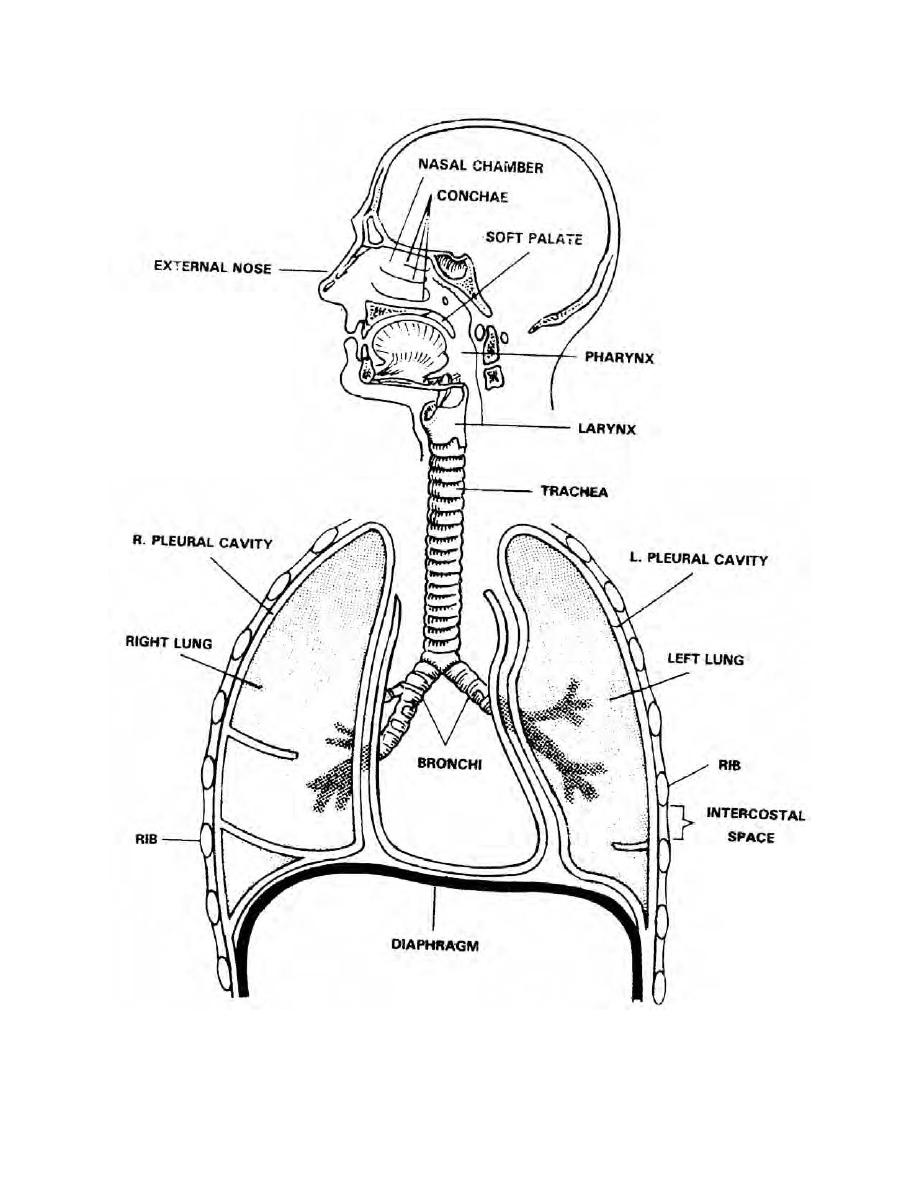
Getting cindery solution
Determination of sulphur
Determination of lead
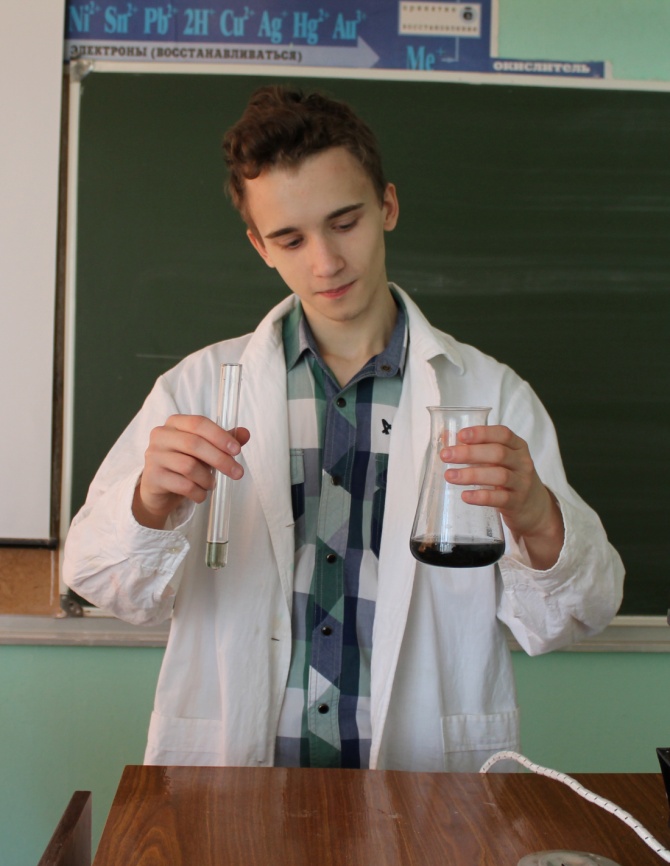
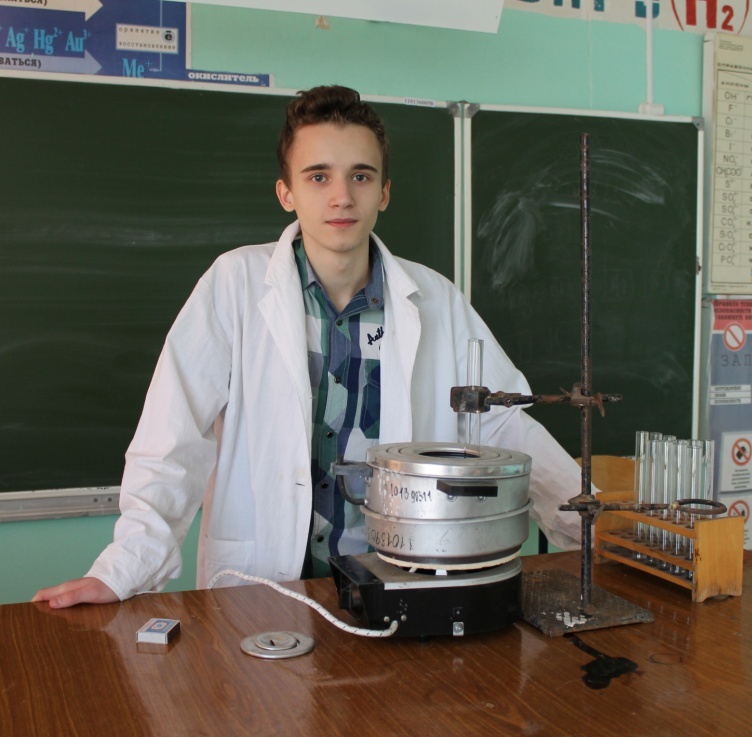
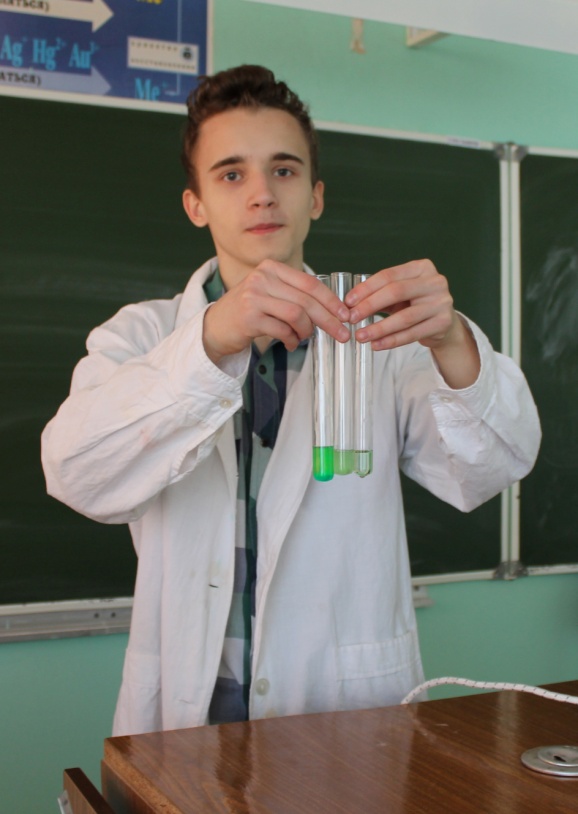
Determination of Iron
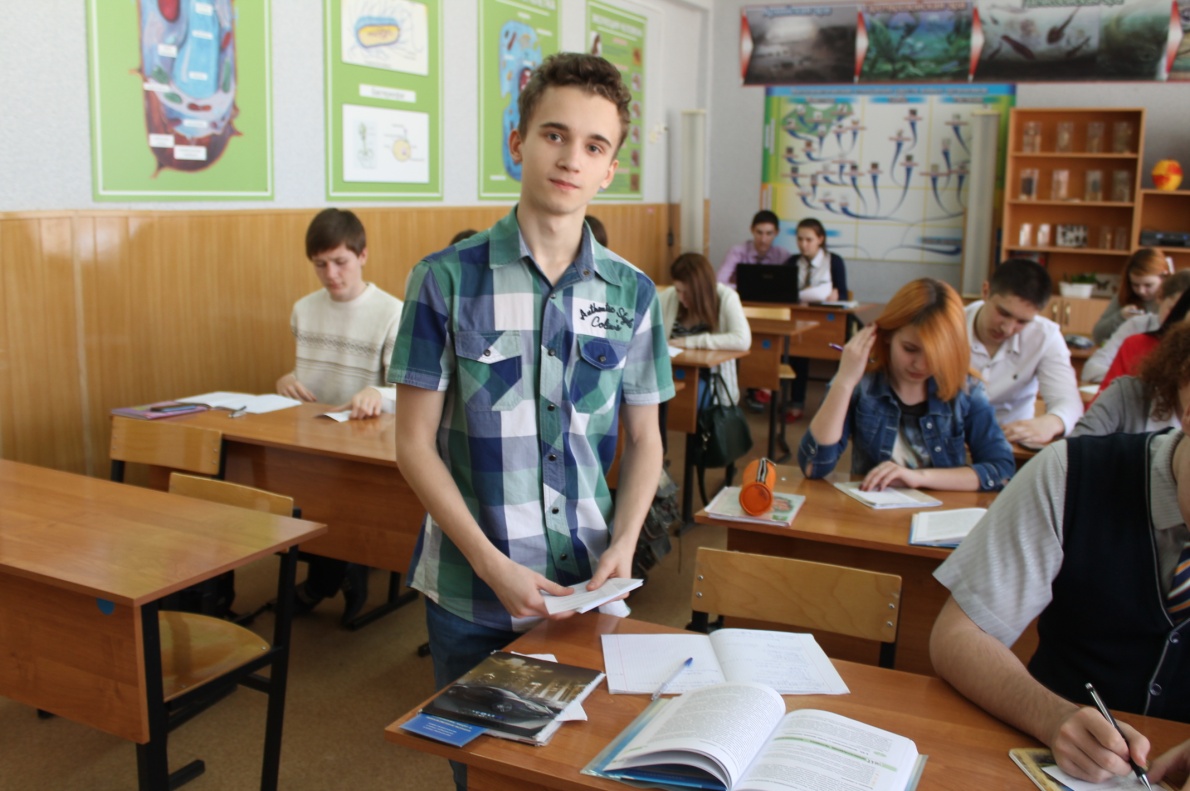
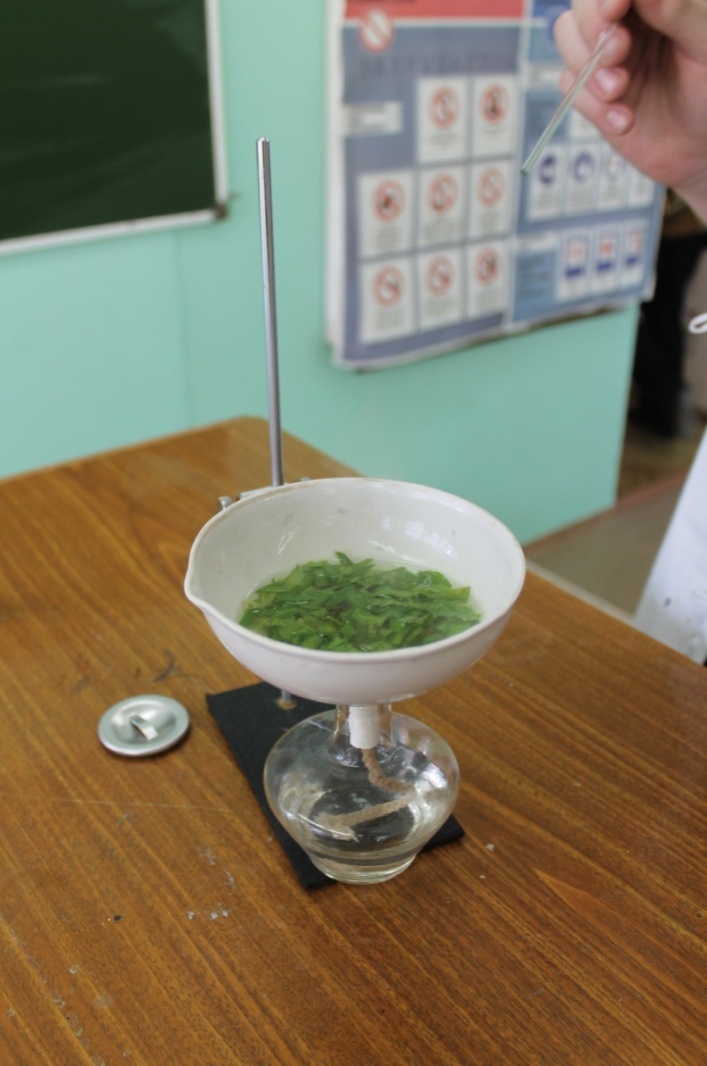
Getting plant sap
Conducting the Questionnaire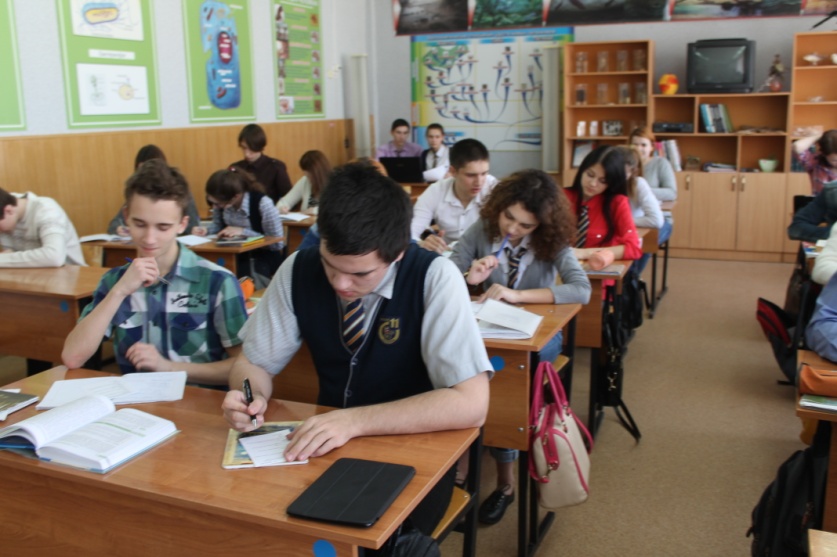
Conducting the Questionnaire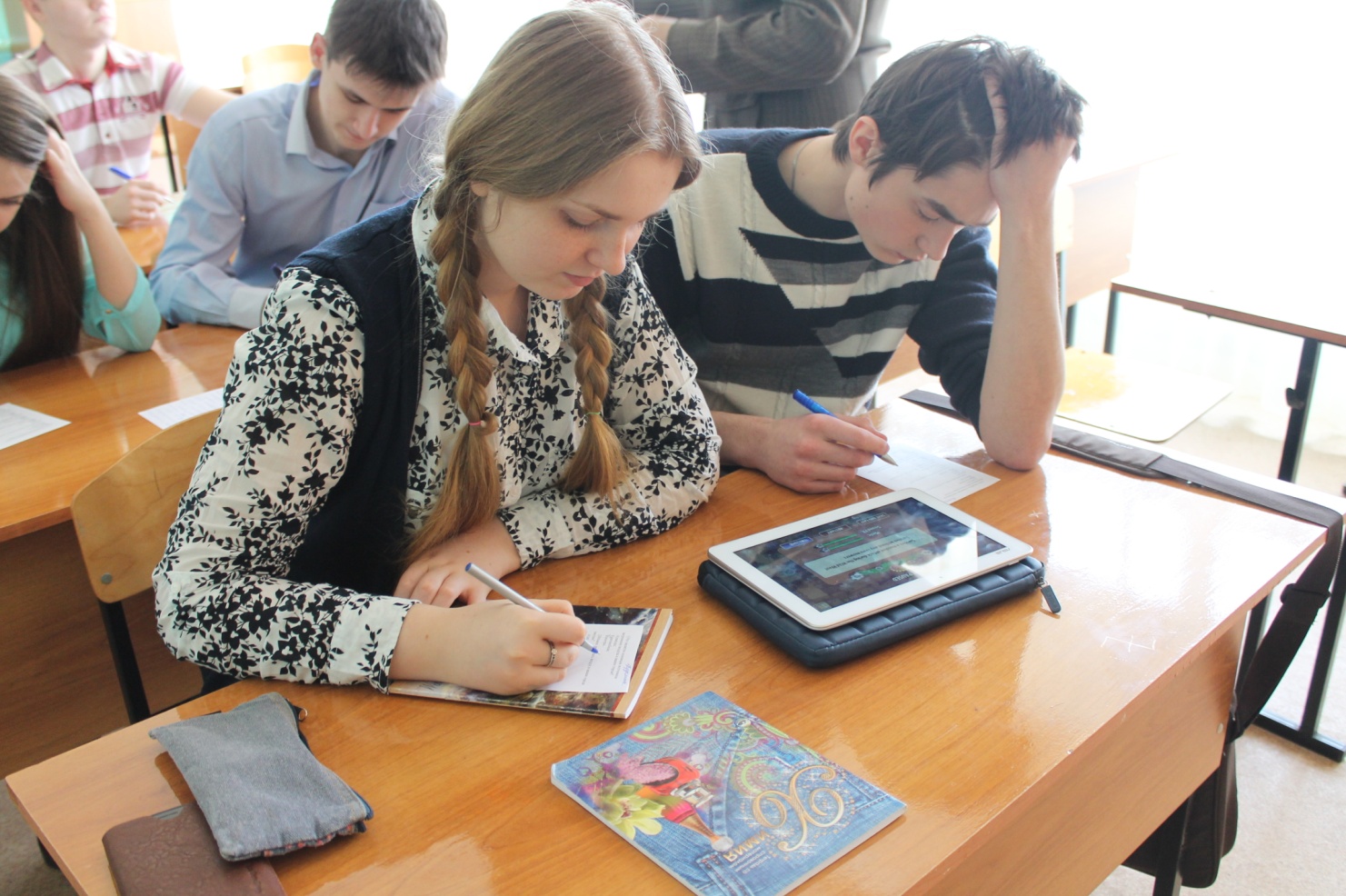
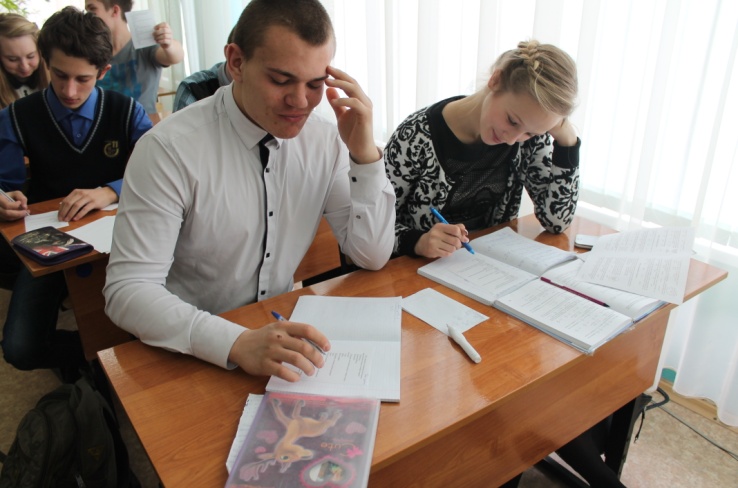
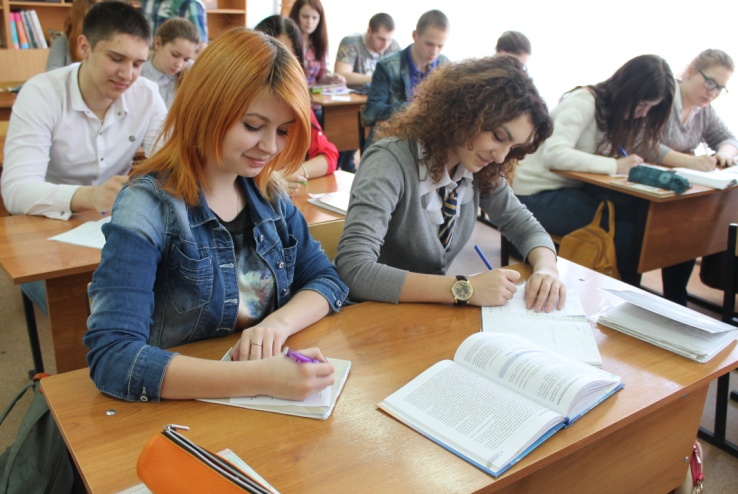
Sights of Rossosh

25


